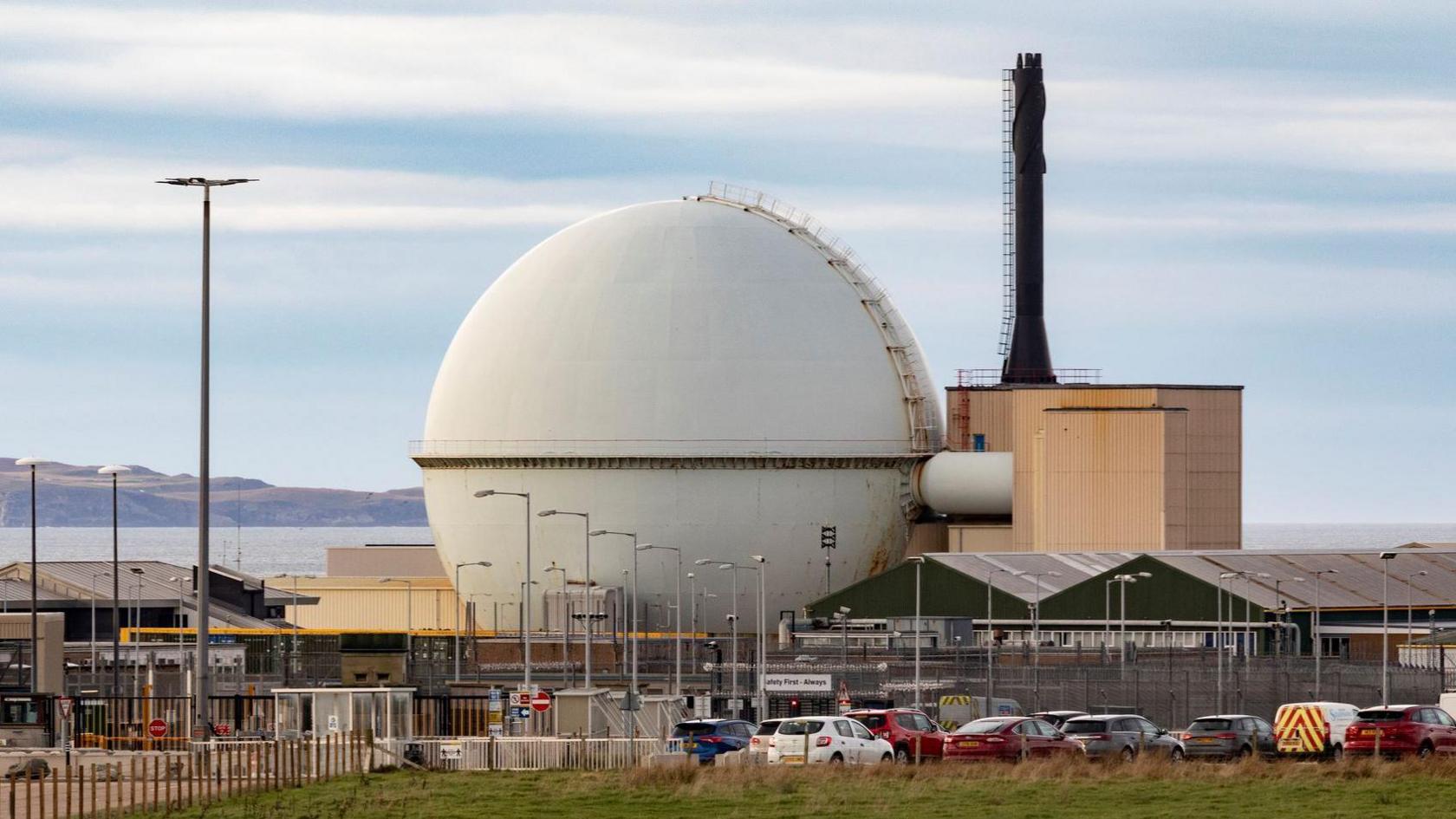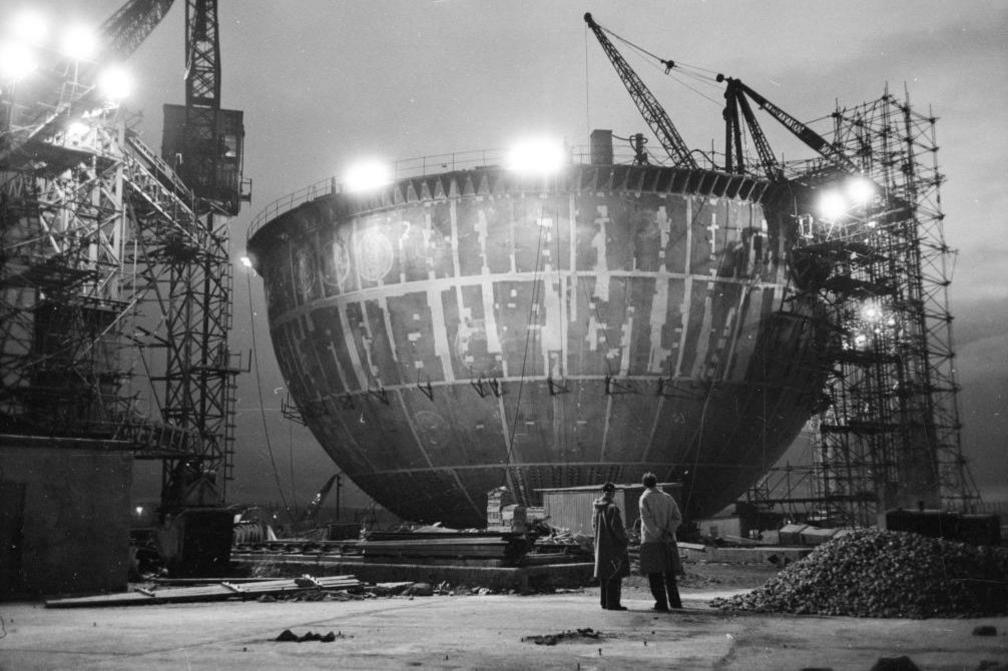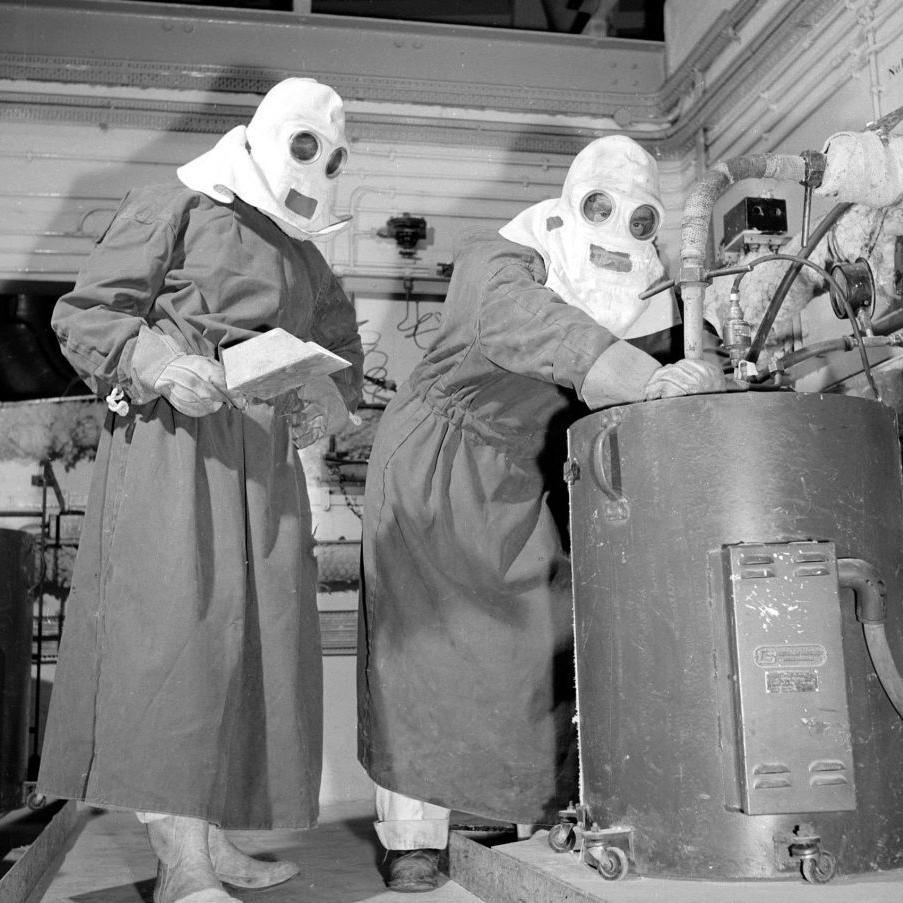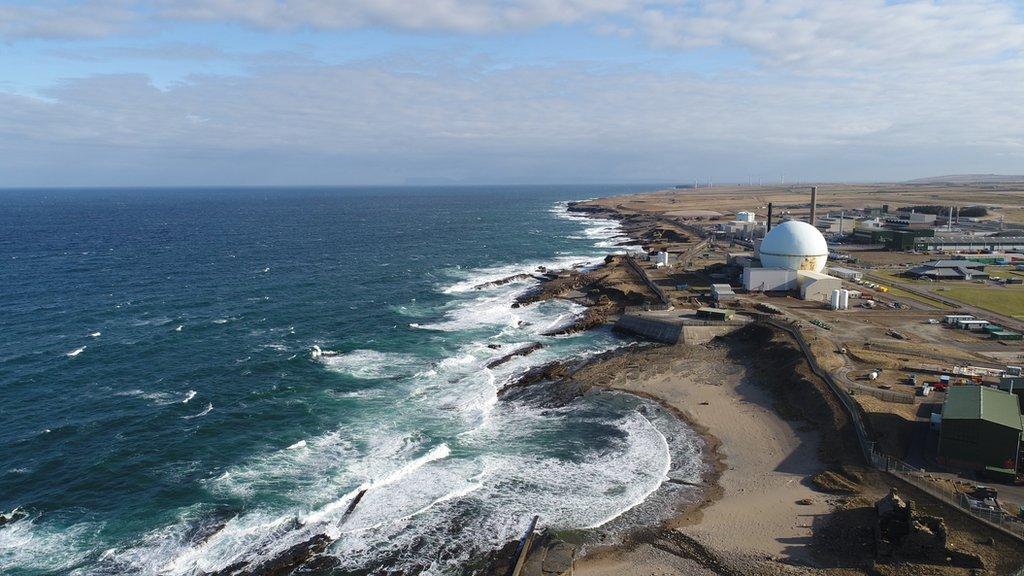Painters sought for job at nuclear 'golf ball'

A fast reactor inside Dounreay's golf ball was the first in the world to provide electricity to a national grid
- Published
Painters are wanted for a job worth up to £500,000 at the Dounreay nuclear power site's "golf ball".
Also known as the "dome" and the "sphere", the 41m (135ft) diameter structure contained the world's first fast breeder nuclear reactor.
Nuclear Restoration Services (NRS), the company leading the decommissioning of Dounreay, has sought specialist contractors to paint easy to reach parts of the sphere that have become rusty.
The last time the entire dome was painted was about 25 years ago, with a decision taken around 2011 not to repeat this work due to cost and the structure being earmarked for demolition.

The golf ball under construction in the 1950s

Dounreay started operating 70 years ago and helped to lead the UK's development of nuclear reactors
Dounreay, near Thurso on the north Caithness coast, was established 70 years ago as an experimental nuclear power site.
In 1962, the fast reactor inside the dome was the first in the world to provide electricity to a national grid.
Enough power was generated for a small town.
The reactor was shut down in 1977.
There was a plan to possibly keep the golf ball as a landmark to recall the local area's role in the development of nuclear power, but the idea was later scrapped.
It was decided to stop repainting the entire structure every 10 years due to cost.
The site's operator at the time, DSRL, said the steel was deemed thick enough to last as a protection until the reactor inside was dismantled.
NRS said parts of the sphere easily accessible from the ground needed to be painted.
A spokesman said: "Small parts of the outer structure are showing signs of surface rust and, while it does not affect its integrity, it's important to monitor and undertake appropriate maintenance during the period of our decommissioning programme.
"In areas accessible from ground level, where we have other work progressing, we will take the opportunity to carry out limited maintenance.
"Work is underway to appoint a specialist contractor to support this."
- Published9 September 2020

- Published20 August 2020
